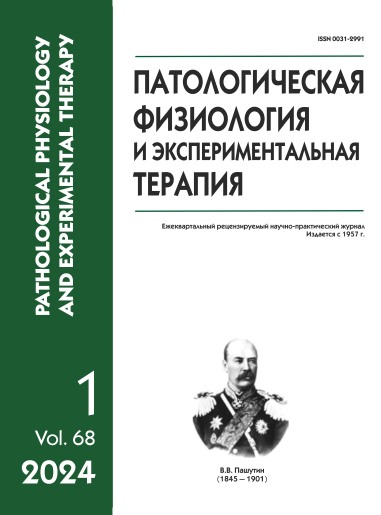The effect of age-related changes in the composition of physiological hemoglobins and blood oxygen balance on the formation of reactivity of the body in the neonatal period
Abstract
The comparison of individual observations in the field of oxygen transport, its delivery to tissues, taking into account the age periods of the child's development, contributes to a more detailed study of the features of the formation of reactivity.
The purpose of the study - to determine the direction of the formation of reactivity of the body with an increase in the oxidative potential in children, due to the composition of hemoglobins and the transition to the pulmonary type of gas exchange.
Methodology. The research data were obtained by retrospective analysis of medical documentation of the stages of the therapeutic and diagnostic process in neonatology and neonatal intensive care units. The method of random sampling of the recorded clinical indicators of the oxygen status of patients was used. The research structure contains clinical data of 208 neonatological and pediatric patients. 582 indicators of structural hemoglobins of blood were analyzed. In groups of patients of non-entological departments, the dynamics of structural hemoglobins of blood HbF and HbA, ctHb levels of blood hemoglobin affinity to oxygen p50 mmHg, total oxygen content in capillary blood ctO2, oxygen capacity of blood CEC were compared. To determine the values of the parameters of oximetry and blood gases, the Radiometer ABL 800 basic analyzer was used. The results of these patients are systematized by groups, depending on age intervals.
Results. To study the features of the formation of reactivity in children of the first months of life, we analyzed 582 information blocks (according to case histories) reflecting the dynamics of a decrease in fetal hemoglobin. During the data analysis, it was determined that the partial pressure of oxygen - p50 (mmHg) required for 50% saturation of blood in the neonatal period has a steady upward trend and reaches a value of 25.1 mmHg, which indicates a decrease in the affinity of hemoglobin to oxygen. Blood oxygen capacity – being a derivative of ctHb, decreases by 4.39 ml of oxygen in each deciliter of blood by the 3rd month of life. The total oxygen content in capillary blood - co2 (r) reaches a minimum level of 12.46 (Vol%) by the end of the neonatal period.
Conclusion. The ability of newborns and young children to adequately respond to the increased influence of factors of oxygenation of the external and internal environment is determined by a combination of specific reactions of the body due to the implementation of individual ontogenetic programs to neutralize excess oxygen exposure.
Downloads
References
11. Luchtman-Jones L, Schwartz A.L., Wilson D.B., Fanaroff A.A., Martin R.J. The blood and hematopoietic system. In:. Neonatal-perinatal medicine. Disorders of fetus and infant. 2002; 1182-254;
12. Duranti G. Oxidative Stress and Skeletal Muscle Function. 2023; 24(12). doi: 10.3390/ijms241210227. PMID: 37373372; PMCID: PMC10299531.
13. Zhao B., Zhu L., Ye M., Lou X., Mou Q., Hu Y., Zhang H., Zhao Y. Oxidative stress and epigenetics in ocular vascular aging: an updated review. 2023; 29(1); 28. doi: 10.1186/s10020-023-00624-7. PMID: 36849907; PMCID: PMC9972630.
14. Böning D., Kuebler W.M., Vogel D., Bloch W. The oxygen dissociation curve of blood in COVID-19-An update. 2023; doi: 10.3389/fmed.2023.1098547. PMID: 36923010; PMCID: PMC10008909.
16. Carles D., André G., Pelluard F., Martin O., Sauvestre F. Pathological Findings in Feto-maternal Hemorrhage. Pediatr Dev Pathol. 2014:102-6. doi: 10.2350/13-12-1419-OA.1. Epub 2014 Feb 27. PMID: 24575782.
17. Grudziadzkie Z.G. «PZO BIOLAR Polarization interference microscope» Polish Optical Factories, WKC Warszawa 1976; 99-70
18. Bernardo V.S., Torres F.F., da Silva D.G.H. Fox O3 and oxidative stress: a multifaceted role in cellular adaptation. 2023; 99 - 83 doi: 10.1007/s00109-022-02281-5. PMID: 36598531.






